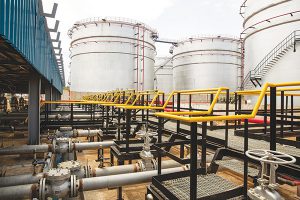Bloomberg
Oil fluctuated after recording the biggest weekly gain in a month as supplies returned in Libya and Kazakhstan, and investors tracked China’s handling of its first community spread of omicron.
Brent crude was narrowly higher after swinging between gains and losses. The global benchmark rises more than 5% last week and touched $83 a barrel, the highest level since late November. Libyan production rose to 900,000 barrels a day after pipeline maintenance was completed, while some output was restored in Kazakhstan following widespread unrest.
Crude has made a strong start to 2022, pushing higher on a combination of optimism about global demand coupled with interruptions to supplies. That’s tightened the market, helping near-term time spreads firm into a bullish, backwardation structure. While the Organisation of Petroleum Exporting Countries and its allies have agreed to boost output further, there’s concern the group may not be able to deliver the planned amount in full.
“Crude’s rally was taking in the worst-case scenarios in Kazakhstan and Libya, which haven’t played out so far, so prices should ease back,†said Vandana Hari, founder of Vanda Insights in Singapore, who also noted weather-related disruptions in North America would be temporary. Demand concerns on the back of the omicron wave are returning to the center stage, she said.
Declining US stockpiles have also helped to underpin oil’s recent gains. Nationwide inventories tracked by the Energy Information Administration have contracted for the past six weeks to the lowest since mid-September.
The Brent market is in backwardation, a bullish pattern marked by near-term prices commanding a premium to those further out. The global benchmark’s prompt spread was 69 cents a barrel in backwardation on Monday, up from 41 cents a week ago.
Investor appetite for risk assets including commodities is also in focus after a sharp surge in benchmark US Treasury yields since the start of the year. The upswing has been fueled by signals that the US Federal Reserve may start to raise key interest rates from as soon as March to combat inflation.
 The Gulf Time Newspaper One of the finest business newspapers in the UAE brought to you by our professional writers and editors.
The Gulf Time Newspaper One of the finest business newspapers in the UAE brought to you by our professional writers and editors.
